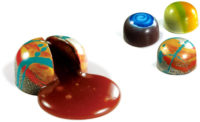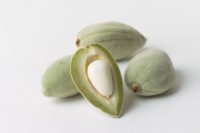Cannabis and confectionery applications have long been connected, likely even before Colorado led the charge of legalizing recreational use in 2014.
And as more states authorize adult use, cannabis confections offer the opportunity for new consumers — and consumers who haven’t used cannabis in awhile — to experience it in an easy, discreet and odor-free way.
“People who are new to cannabis don't want to deal with any accessories, they just want to have a great experience,” said Kristi Knoblich Palmer, founder of California-based Kiva Confections. “Edibles are not only delicious, they are consistent, reliable and easily dosed. Gone are the days of inconsistent brownies — strict regulations empower users to trust edibles and feel confident about their experience.”
Consumers appear to be increasingly receptive to edibles, according to a new report from New Frontier Data. The research firm reported the cannabis-infused products market is expected to approach $3 billion this year. Infused products represent about 14 percent of the sales and are the third top-selling format behind cannabis flower and vaping products.
Furthermore, solid edible products, led by gummies, comprise more than 90 percent of the top-selling infused products. That figure wouldn’t surprise Nancy Whiteman, ceo of Colorado-based Wana Brands.
“Confectionery as a category is ideal for delivering cannabinoids because the products have a long shelf life, they’re easy to transport, and they’re considered a treat,” she said. “Gummies specifically are ideal because people have gotten very used to consuming their supplements in a gummy format.”
Manufacturers of gummy edibles are mainly using two cannabinoids: cannabidiol (CBD), known for its non-psychoactive, calming effect, and tetrahydrocannabinol (THC), a psychoactive, mood-enhancing compound.
Many producers combine the compounds in their products in varying ratios so consumers can get the synergistic effect of both cannabinoids.
“When combined together, CBD counteracts the psychoactivity of THC, so you have a much mellower experience, yet with an even fuller range of therapeutic compounds,” Knoblich Palmer said.
Manufacturing considerations
Whether manufacturers plan to use CBD, THC or both, there are many factors to consider in order to make successful edible products.
Purchasing high quality cannabis oils from reliable suppliers is of the utmost importance, Whiteman said.
“Sourcing quality cannabis oil is key: both where you source and who’s doing the extraction matters,” she said. “We look at growing practices and existing volume. We have partnerships with cultivators that follow organic growing practices and produce enough plant material so we know we have access to a consistent strain.”
While cannabis-infused foods are not technically legal at the federal level, producers should still follow the same safety regulations and good manufacturing practices that govern non-infused confectionery production. Not only will manufacturers be prepared for audits if cannabis-infused products become federally legal, but they’ll also protect their customers.
“Cannabis is an industry unto itself, but we aren't reinventing the wheel,” Knoblich Palmer said. “Food safety and quality — from sourcing to production to packaging, storage and delivery — is all paramount.”
Another challenge is achieving consistent cannabinoid dosing from batch to batch and piece to piece. In addition to sound manufacturing protocols, testing throughout the production process ensures customers will receive uniform products each time.
“We have multiple checkpoints for dosing,” Whiteman said. “We require that the oil that we purchase come with the results for potency, pesticides and contaminants from a third-party lab. We use the results of this testing to calibrate the oil that is added to each batch, adjusting it for differences in oil potency. We then test the final product again to ensure that the dosage is exactly where it should be.”
There’s also the issue of equipment. Multi-state producers of cannabis edibles are not permitted to sell them across state lines, requiring producers to set up manufacturing operations or contract manufacturing agreements in each state in which they desire to operate. That means also making recipes and manufacturing processes replicable but flexible based on the environment.
“With confectionery products specifically, you need to know that the recipe can scale, because it can be sensitive to altitude and temperature and a lot of things that can go wrong,” Whiteman said. “We've spent a lot of time developing and refining our recipes, both in Colorado, and then in each additional state we’ve launched. As soon as we know we’re entering a new state, we dial in the recipe for that specific environment.”
Products on the market
Kiva Confections is known for its Kiva chocolate bars, which come in a variety of indulgent, comforting flavors. Churro Milk Chocolate and Mint Chocolate Chip Dark, both featuring 100mg THC per bar and 5mg THC per serving, are among the line’s newest additions.
Kiva also makes Camino gummies, which are designed to inspire particular moods or feelings. For example, the Freshly Squeezed “Recover” gummies feature 1mg of THC and 9mg of CBD per serving, as well as ginseng, milk thistle and calming terpenes, or aromatic and flavor compounds, meant to have a restorative effect.
Recently, the company added Midnight Blueberry “Sleep” gummies to the Camino line. Unlike its predecessors, each gummy contains 5mg of THC and 1mg of CBN, or cannabinol, a rare cannabinoid gaining greater attention in the cannabis industry.
“We knew we wanted to make a sleep-specific product since that's a pressure point that a lot of consumers had shared with us,” Knoblich Palmer said. “CBN has documented tranquil, relaxing properties, so it really is the perfect cannabinoid for sleep issues. Sourcing CBN proved so difficult that we had to search for nine months to find the right supplier — but it was all worth it. The response to Midnight Blueberry Camino has been overwhelming, to say the least.”
One of the concerns with cannabis edibles is the time it takes to start feeling the effects, which can take up to two hours in some cases. The effects may linger for up to six hours.
As a result, Wana Brands began working with Azuca, developer of the TiME infusion process, to create Wana Quick Fast-Acting Gummies. Available in cocktail-inspired flavors, these gummies have an onset of 5-15 minutes and effects lasting up to three hours.
Late last year Wana Brands introduced Wana Wellness Hemp Gummies, which feature broad-spectrum hemp oil that contains 20mg of naturally-occurring CBD per serving. Broad-spectrum oil is extracted from the parts of the hemp plant, a particular type of cannabis, that’s exposed to air and contains essential terpenes and other compounds that support health.
“We have always focused on helping people have a more nuanced, effective and enjoyable experience with our products, which is evident in our wide array of available ratios and classes,” Whiteman said. “We will be exploring those trends further by combining and tweaking variables, including dosage, onset and the addition of terpenes, functional ingredients and rare cannabinoids. Sometimes minor changes or additions can yield very significant improvements in people’s experiences.”






